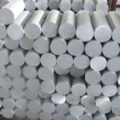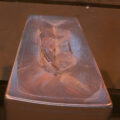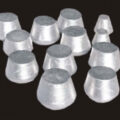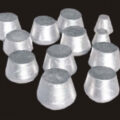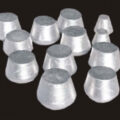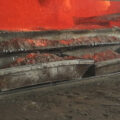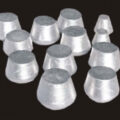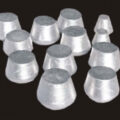In recent years, it is generally accepted that the Sr Modifier inhibits the eutectic, thereby increasing the primary crystal content and increasing the feeding resistance in the eutectic stage. At the same time, the modification treatment causes the morphology of the solid/liquid interface during the solidification of the eutectic to change from the irregular shape of the non-modified alloy to the regular shape, or to grow in a plane growth mode, which is conducive to the formation of large and dispersed pores. In the non-metamorphic alloy, the eutectic silicon extends into the liquid phase, thus forming a lot of isolated small liquid pools in the solidification front, which can not be fed in the subsequent solidification process and form fine porosity.

Although grain refinement will increase inclusions in molten aluminum, it can reduce porosity in castings. Ti2B particles were added to the aluminum liquid, and it was found that during the solidification process, the Ti2B particles were moved between the aA dendrites by the liquid/solid interface, thus becoming the nucleation base of the pores. However, when the chemical ratio of Ti and B was changed slightly, the change the interface energy between the particles and the molten aluminum is reduced, so that the Ti2B particles become the core of a-Al, and they are all used for a-Al nucleation, and no longer become the core of the pores. Roy et al. believe that the refinement of grains makes the pores evenly distributed and smaller in size. La orhan et al. believe that the reason why the grain refinement reduces the porosity is that the small a-Al is densely packed, which reduces the feeding resistance.
Modification treatment can change the morphology of eutectic silicon, thereby improving the mechanical properties of the alloy, but the modification treatment also increases porosity. The test found that the porosity in the non-modified alloy is irregular and distributed among the dendrites. In the metamorphic alloy, except for the irregular pores distributed between the dendrites, most of the pores are larger than the dendrite spacing, and the pores are spherical and exist between the grains. It shows that these holes are surrounded by liquid phase during the whole solidification process.
Early studies believed that the reason for the increase in porosity caused by Modifier was that the addition of Sr caused the aluminum liquid to absorb hydrogen, which increased the hydrogen content of the aluminum liquid. However, recent studies have confirmed that the deterioration of the Sr Modifier did not cause an increase in the hydrogen content of molten aluminum. Argo et al. believed that Sr caused the redistribution of solidification shrinkage, that is, reduced concentrated shrinkage and increased porosity. However, Iwahori et al. believed that sr modification increased the difficulty of degassing of molten aluminum, thereby increasing the alloy’s looseness tendency, especially when the inclusion content in molten aluminum was high. Another view is that the deterioration increases the number of inclusions in the molten aluminum, which makes it easier to nucleate the pores, thereby causing an increase in porosity. However, due to the difficulty of detecting inclusions, the change of inclusion concentration before and after the deterioration treatment is not explained.

